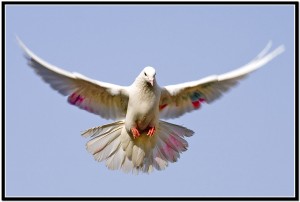In order to build a successful and authentic meditation practice you need courage, and the two types of courage that I want to highlight today are the courage to initiate, and the courage to persist. You need the courage to initiate to get through all the excuses and distractions that are in the way of you starting or restarting your meditation practice, and just ‘put your bum on the seat’ so to speak. You then need the courage of persistence, which is really a steady type of willpower, to simply keep going on a regular basis week in week out, so that your practice has a chance to bear fruit. Without these two types of courage, the inner clarity, wellbeing and centeredness that is within the grasp of anyone who persists in meditation will remain out of your reach.
Two Types of Meditation: Sitting With the Silence and Sitting With the Noise
When many people approach me for the first time to talk about meditation, the most common reason for them wanting to start meditating is that they want to find some headspace, some inner silence that they can relax with. They then tell me that they simply cannot stop their mind chattering, and so they find it “impossible” to actually start a meditation practice. What we need to realize (and this is really important) is that before we can enjoy “sitting with silence” we first need to enjoy the process of “sitting with the noise”, that noise being the inner noise of our mind incessantly chattering with itself!
The way to learn how to sit in silence is first to get comfortable sitting with the noise of your mind. Over time and out of your daily or regular practice of sitting with the noise of your mind you will gradually start to notice an inner silence emerging, at first only occasionally in brief flashes, but the gradually emerging more and more fully as time goes by.
The Story of Tom
Back in the 90’s, when I was a Buddhist monk teaching meditation in the north of England I had a man in his 70’s come to my meditation class called Tom. Tom was an ex coal miner. He was in constant discomfort due to rheumatism, and his wife was a mental and physical invalid (Parkinson’s disease I think) to whom Tom was the sole care giver. He arrived at my class for the first time in deep despair regarding the loss of his wife, of his own physical fitness and of many of the other good things in his life that had previously made it enjoyable. He made a courageous choice to sit down for 20minutes at the beginning of each day to meditate, a choice to which he stuck to. He used to describe his meditation to me, saying that usually for the first 5-10 minutes all of the anger, despair and sadness would well up within him about his life and about how unfair it all was. Then, at some point in the middle of his meditation, patches of silence would start to appear, and the noise in his mind would quieten. Usually, for the last few minutes of his meditation he said, he would find a state of deep peace, and those few minutes at the end of his meditation were enough to get him through the rest of the day.
Tom’s story is a simple story of courage and persistence in meditation. His description of his own meditation experience shows the truth of how very often before we experience peace in meditation we first have to sit with the “storm” so to speak. The way to meditate in silence is first to get comfortable with sitting with the noise!
Practical Work: Get Comfortable Sitting With The Noise
Pick an amount of time that you can commit to every day, from 3-20minutes. Resolve each day during that time to generate courage and self-compassion, and then simply “sit, breathe and be” with the noise inside your mind. Forget about immediately making your mind silent, just focus on sitting breathing and being with what is there, pleasant or unpleasant, happy or sad.
If you do this consistently each day the inner silence will emerge in its own time. If you make this a lifetime practice the inner silence will grow organically within your life a tree. A tree grows too slowly to spot the changes from day to day, but from month to month, year to year it grows from a fragile seedling to a mighty tree.
Long Term Results
The final thing that I want to mention about meditating on inner noise and inner silence is that eventually, after you have been meditating for quite some time you will discover that you are equally happy to experience inner noise or inner silence, you realize that they are really just two sides of the same coin and not so different in reality.
This can be difficult to grasp conceptually without experience, but an analogy may help: In the same way that a bright, sunny day and a thunderstorm are both “weather”, so a loud noisy mind and a silent one are just “mind”. If you are sitting in a strong house looking out of your window, a storm and a sunny day can both be interesting and enjoyable to experience. Similarly once we have grounded our awareness in the centre of our being through meditation, both noise and silence are equally enjoyable 😉
© Toby Ouvry 2011, you are welcome to use or share this article, but please cite Toby as the source and include reference to his website www.tobyouvry.com




